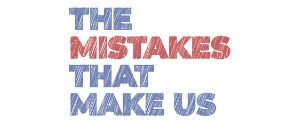Below is some material from a very early draft of the book… probably best left on the cutting room floor.
Some mistakes can be funny, some can be embarrassing, some can be deadly, and some could destroy humanity. Oops, that got dark real quick — my mistake.
In my favorite film, “This is Spinal Tap,” many laughs result from mistakes (read more about that here).
For example, the band named themselves “The Originals,” only to learn there was already another band with that name. The band got lost trying to find the stage entrance in Cleveland. A hotel reservation for seven suites was mistakenly booked as one suite on the seventh floor. Their “Stonehenge” stage prop that was intended to be 18 feet tall was labeled on the napkin drawing as 18” — so it was built as 18 inches tall, with the mistake only being discovered by the band as it was being lowered dramatically onto the stage during a show. It would be a mistake to try to list all of the mistakes here. We can now chuckle at the film’s viewers (including real rock bands) who made the mistake of thinking it was a real documentary about a real band.
TV shows and films (as with books) almost always contain mistakes, including continuity errors and anachronisms. These include the Starbucks coffee cup that appeared in an episode of “Game of Thrones,” a scene in “The Wizard of Oz” where Dorothy was wearing black shows instead of her ruby-red slippers, the wristwatch worn by an extra in the Civil War film “Glory,” or the modern car that appeared in the background of a scene in “Braveheart.”
Oops. At least mistakes like those can be fixed during final editing (if they get caught along the way). Or they can be fixed in a director’s cut or an updated release of the production (or a new printing or edition of a book). In real life, we can’t go back and edit out our mistakes.
“I think it’s a mistake for young filmmakers to just buy digital equipment and shoot a feature. Make short films first, make your mistakes and learn from them.” — Jason Reitman
Some mistakes are trivial, others are tragic.
Tragically, in a mistake (or a series of mistakes) on a movie set in 2021, a cinematographer, Halyna Hutchins, was killed when a prop gun held by actor Alec Baldwin discharged, striking and killing her with a real bullet. Why did the gun discharge? Why was it not loaded with blanks instead of live rounds? Why were mistakes made in not taking actions that could have prevented this death?
In a film from my childhood, 1983’s “WarGames,” Matthew Broderick’s character hacks into a military computer (a mistake). He mistakenly thinks he’s in a simulator, and nearly starts a nuclear war. In real life 1983, humanity narrowly avoided a nuclear World War 3 when the Soviets thought they had detected a first-strike American nuclear missile attached.
Thankfully, a Soviet officer, Stanislav Petrov, suspected it was a false alarm, deciding to wait for more evidence before launching a counterattack. Indeed, a missile detection system had malfunctioned. Hopefully, they learned from the cause of that mistake in a way that either prevented future malfunctions or implemented stronger protocols to ensure other future officers would be as cautious as Petrov.
When evaluating possible decisions, one question I ask myself is, “What’s the worst that could happen?” If the risk from a mistake is small, I try not to overthink it. Sometimes, you have to just try and see what happens. If a decision is irreversible, such as launching a massive nuclear attack, we’d (hopefully) be more cautious and deliberate.
Paraphrasing the computer at the end of WarGames, global thermonuclear war is a “strange game,” and it would be a mistake to play. Have we learned that lesson? Again, my mistake, that got dark again. Let’s get back to my silly little podcast.



